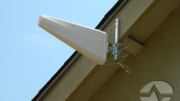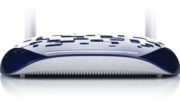Take a look at this graphic, courtesy of weBoost:
Graphics like these have been part of cell booster lore for over a decade. I think they’re a good attempt to tell customers what they’re going to get but they also confuse people. First of all most people don’t know their average signal level. iPhones don’t even let you get a good, live signal level. And we all know, those bar measurements are useless.
But you have to feel for weBoost anyway.
I mean, they are trying to communicate some important information to you and it’s really hard since your phone isn’t telling you much.
The real point they are trying to make is that the quality of your indoor signal will be dependent on the quality of your outdoor signal. You’ll get the best results if you get great signal outside but poor signal inside. This happens with really energy efficient homes and businesses. The same upgrades that keep out solar radiation and heat also keep out cell signals.
On the other hand, if you’re just teetering on the edge of losing signal, you won’t get as good a signal inside.
Yeah but why is that?
In this case, I took this chart from weBoost’s Home Multiroom booster. It’s a mid-level booster that provides 62dB of boost to an incoming signal. That means the signal it puts out through the indoor antenna has the potential to be about 1,000,000 times stronger than the incoming signal. However, you lose a lot of that signal, fast.
Don’t blame weBoost- it’s an established law of physics called the “rule of squares.” In general you will lose about 80% of the power of any broadcast signal within six feet. Within 12 feet you’ll have lost about 95% of that signal.
That sounds pretty dire but since your cell phone is used to working with very weak signals, you’ll find that you end up being just fine.
Since your booster can amplify the signal by 62dB, the math is simple. If the incoming signal is -100dB (which is about 1 bar) the power at the indoor antenna is -38dB. An online calculator says that within 12 feet, your signal is 26dB less, or -64dB. By the time you’re about 33 feet away, you’re back down to that same -100dB.
On the other hand if you start with a stronger signal, you’ll get more coverage before that signal level drops back down to -100.
Does all this dB stuff confuse you?
dB, or decibels, are a way to measure very large changes in strength. That strength can be in sound waves, electricity, or anything. You can convert from dB to percentage, or from dBm (percentage of a milliwatt) into watts, using online calculators. Here’s a decent longform article that will tell you more.
If this is confusing…
…and you need help choosing the right booster, why not get the assistance you need from the professionals for free? You can fill out this online form or, call the technicians at our 100% US-based call center in Novi Michigan during East Coast business hours. If all this talk of dBs and negatives and squares has you shaking your head, you’ll find some welcome peace from talking to a certified expert. The number you need to call is 888-233-7563.





